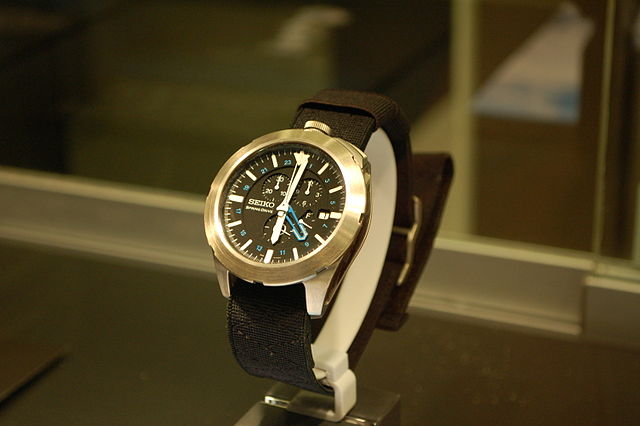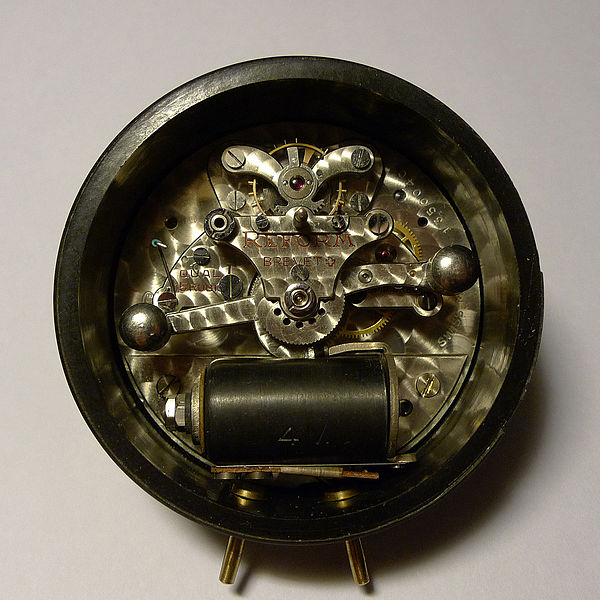Spring Drive is a name given to a series of watch movements produced by Epson in Shiojiri. The concept of using a mainspring to power a quartz timing package was first conceived in 1977 by Yoshikazu Akahane at Suwa Seikosha. Specified to one second accuracy per day, the movement uses a conventional gear train as in traditional mechanical watches, but rather than an escapement and balance wheel, instead features Seiko's Tri-synchro Regulator system in which power delivery to the watch hands is regulated based on a reference quartz signal.
The Seiko Spacewalk is a limited edition Spring Drive model, designed specifically for use in space
The parts of the 5R86 Spring Drive caliber
In horology, a movement, also known as a caliber or calibre, is the mechanism of a watch or timepiece, as opposed to the case, which encloses and protects the movement, and the face, which displays the time. The term originated with mechanical timepieces, whose clockwork movements are made of many moving parts. The movement of a digital watch is more commonly known as a module.
Electromechanical self-winding clock movement from Switzerland
Movement of a Czech wristwatch
Movement of an old pocket watch
A modern bridge watch movement






